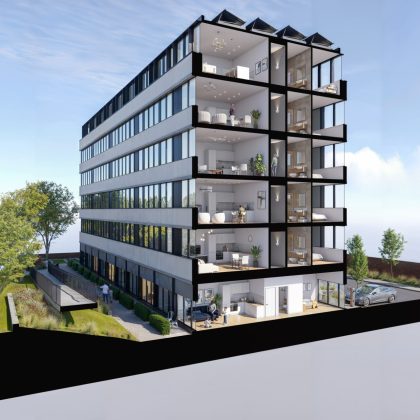Coverdale Barclay’s Account Director Alexander Peel asks whether Chancellor Rachel Reeves’ Spring Statement has shifted the outlook for the built environment.
In short, no.
In Chancellor Rachel Reeves’ ideal world, yesterday’s statement would have been little more than a programmatic update on Labour’s progress in growing the economy.
In reality, due to the evaporation of the £9.9bn of fiscal headroom the Chancellor had left herself at the last formal Budget – primarily due to the higher cost of government debt – Reeves needed to show that the government is making changes to meet its own fiscal rules. This took the form of major cuts to disability benefits. However, from a real estate perspective, the macroeconomic fundamentals remain unchanged:
- The government is sticking by its self-imposed fiscal rules and underlining ‘stability’ in its messaging.
- Gilt yields remain high, tempting capital away from lower-yielding real estate.
- The outlook for interest rates remains uncertain, driven by sticky inflation and the prospect of tariffs (some of which were announced this morning) with a cutting cycle slower than had been predicted at the Autumn Budget.
- The government is pressing ahead with increased employer National Insurance contributions and a higher national living wage, which come into effect in April. Retail and hospitality bodies are describing these changes as a ‘cliff edge’ which will harm an already struggling sector.
- Economic growth is still proving sluggish, and worryingly, productivity has been revised down.
And many of the policies affecting housing and infrastructure had been announced prior to yesterday’s statement:
- £2 billion pledged for affordable housing, delivering 18,000 new social and affordable homes, will not move the dial significantly.
- A commitment to training 60,000 young people in the construction sector by 2029 has been welcomed.
- No U-turn or extension on next week’s stamp duty deadline.
- An extra £13 billion pledged for further infrastructure spending.
The most telling insights come from the Office for Budget Responsibility’s accompanying report.
While the Chancellor will no doubt be disappointed by the OBR halving the UK’s growth outlook from two to one percent for the next year, she will have been delighted that the fiscal watchdog calculated that planning reform will add 0.2% to GDP, worth around £6.8bn – a vindication of one of the core policy pillars of this government. However, the government’s target of 1.5 million homes over the course of the Parliament is looking increasingly fictional. Reeves now thinks 1.3 million is more realistic, and the OBR’s most optimistic prediction sits at 1.2 million.
The OBR also predicted that house prices will rise from around £265,000 in the final quarter of 2024 to around £295,000 in 2029 – relatively steady growth of 2.5% a year. Prospective home buyers may be dismayed, but the residential sector will be breathing a sigh of relief.
So while the Chancellor went to great lengths to position herself as the architect of the country’s economic future, the reality is that yesterday’s statement was little more than a reaction to structural forces outside of her control.



